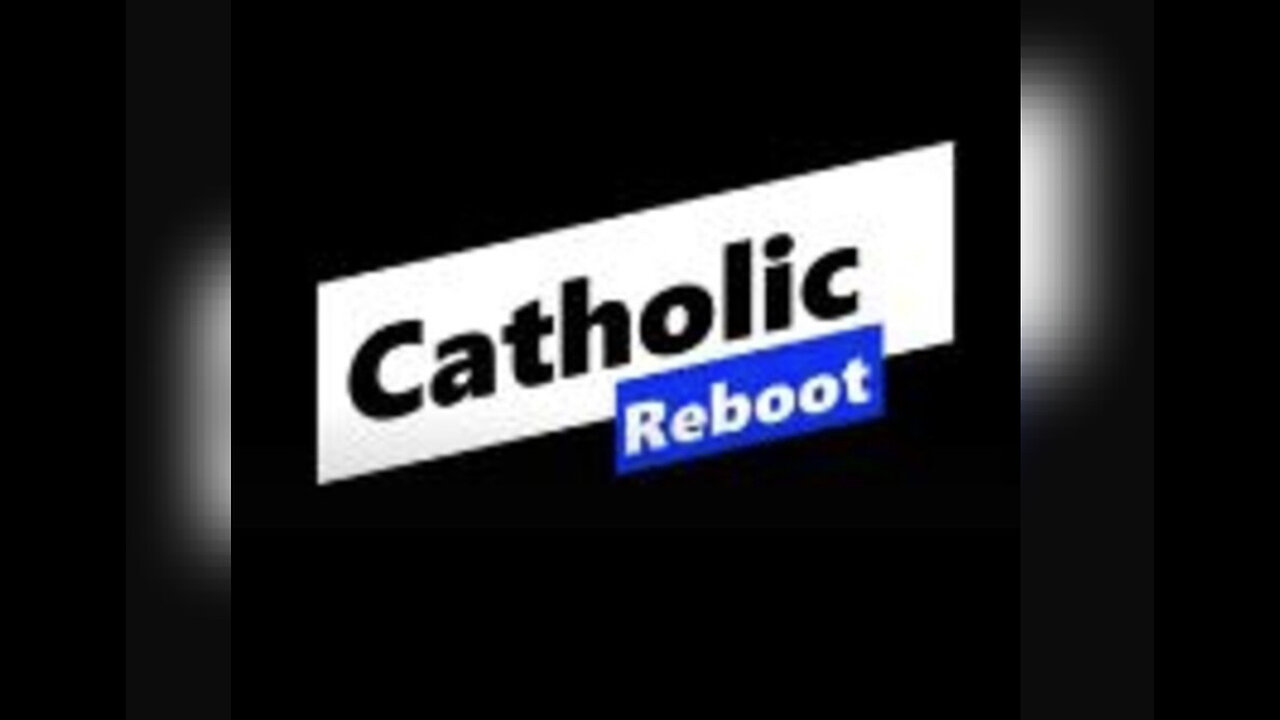Premium Only Content

Episode 3111: From Clarity to Confusion: The Modern Catechism Confuses - Morning Episode
Nightly Zoom Coordinates for Rosary:
Meeting ID: 865 8978 0399
Passcode: Wjjv4960!
Speak Lord for your Servant is Listening
Book Recommendation of the Day
“The Spirit and Mission of the Cistercian Order"
This work includes a biography of St. Robert of Newminster, offering insights into his role in the Cistercian movement and his spiritual contributions. It's a valuable resource for understanding the broader context of monastic reform during his time.
I want to discuss something that is one of the most pressing doctrinal concerns of our time: the contrast between the Baltimore Catechism, a tried-and-true guide of Catholic teaching, and the modern 1992 Catechism of the Catholic Church promulgated by Pope John Paul II.
Introduction and Historical Context
To understand this contrast, we must begin with their roots:
• The Baltimore Catechism, developed by the Third Plenary Council of Baltimore in 1885, was grounded in the Roman Catechism of the Council of Trent (1566). Its goal was catechetical clarity: concise, memorized truths that formed the moral and doctrinal backbone of American Catholic education.
• The Modern Catechism, published in 1992 and updated in 1997, was a project of the post-Vatican II era, a massive compilation influenced by modern theologians and aiming to be pastoral, ecumenical, and adaptable.
At face value, one might say both serve the same Church. But as we shall see, the methods, theological emphasis, and underlying philosophies differ drastically.
Structure – Simplicity vs. Complexity
The Baltimore Catechism uses the classic Q&A format:
Q. Why did God make you?
A. God made me to know Him, love Him, and serve Him in this world, and to be happy with Him forever in the next.
Simple, memorable, and deeply theological.
In contrast, the Modern Catechism is a dense 900+ paragraph volume. While it offers theological reflection, its structure is less didactic and more academic, more suitable for theologians than schoolchildren. This shift in method reflects a broader departure: a reluctance to teach doctrine with the simplicity and authority that once defined Catholic instruction.
This is more than a stylistic difference. It reflects a philosophy of ambiguity one that favors "dialogue" over declaration, and "pastoral tone" over precise truth.
Key Doctrinal Departures
Let’s examine specific teachings where the modern catechism differs from or waters down the clarity of traditional doctrine:
1. Salvation Outside the Church
• Baltimore Catechism (Q. 167):
Q. Can one be saved outside the Catholic Church?
A. No one can be saved outside the Catholic Church.
• Modern Catechism (CCC 847):
"Those who, through no fault of their own, do not know the Gospel of Christ or His Church, but who nevertheless seek God with a sincere heart... may achieve eternal salvation."
Problem: This vague phrasing softens the necessity of explicit faith in Christ and the Church. It introduces ambiguity that risks promoting indifferentism the false belief that all religions are equally valid paths to salvation.
Pope Gregory XVI warned in Quo Pluribus (1846):
"Indifferentism... is the most dangerous of all doctrines."
Pope Pius IX in Quanta Cura (1864):
"We must absolutely hold that there is no salvation outside the Apostolic Roman Church..."
2. The Nature of the Church
• Baltimore Catechism (Q. 123):
The Church is the one established by Christ on Peter, the first pope. It is one, holy, Catholic, and apostolic.
• Modern Catechism (CCC 819):
"Many elements of sanctification and of truth are found outside the Church's visible structure."
Problem: The phrase "elements of sanctification" has led many to believe that Protestant communities are partial churches, rather than separated from the true Church. This weakens the urgency of conversion and the missionary spirit.
Pope Leo XIII, Satis Cognitum (1896):
"The Church is visible because she is a body; hence they err in a matter of divine truth who imagine the Church to be invisible, intangible, a mere abstraction."
3. Capital Punishment
• Traditional View: Throughout Church history, including St. Augustine and St. Thomas Aquinas, the death penalty was seen as a legitimate exercise of justice.
• Modern Catechism (Post-2018 Revision):
"The death penalty is inadmissible because it is an attack on the inviolability and dignity of the person."
Problem: This is a doctrinal novelty that contradicts not only Scripture (Genesis 9:6, Romans 13:4) but also 2,000 years of Catholic moral theology. It suggests a change in moral doctrine, something that cannot happen.
St. Thomas Aquinas (Summa Theologiae, II-II, q.64, a.2):
"It is lawful to kill sinners in order to safeguard the common good, just as it is lawful to amputate a decaying limb to save the body."
Underlying Philosophies – Doctrinal Certainty vs. Pastoral Ambiguity
These changes are not isolated. They are part of a broader philosophical shift.
The Council of Trent taught with clarity to protect the faithful from Protestant heresies. The Baltimore Catechism, inheriting this spirit, offered firm boundaries. By contrast, the modern catechism was produced in an era dominated by ecumenism, modern psychology, and subjective theology.
It prefers to "walk with" the sinner rather than call him to repentance. It often emphasizes man's dignity more than his fallen nature. It frequently invokes the "development of doctrine" to justify revisions, when in fact, much of it amounts to departure from doctrine.
Pope St. Pius X, Pascendi Dominici Gregis (1907):
"The most pernicious of all the adversaries of the Church are not those from without, but those from within."
The Fruits of Each Catechism
What fruits has each catechism borne?
• The Baltimore Catechism formed saints, martyrs, missionaries, and faithful families for over a century. It was simple enough for a child, rich enough for a scholar, and clear enough to form the soul.
• The Modern Catechism, despite its theological depth, has been largely ineffective in forming the faithful. Today, over 70% of self-identified Catholics do not believe in the Real Presence, and many are ignorant of even the most basic tenets of the Faith.
This is not merely the fault of poor catechesis it is the fruit of a confused catechism that reflects the upheaval of the post-conciliar Church.
St. Robert Bellarmine:
"The greatest service we can render to the Church is to fight error and heresy and to defend the true faith."
What Must We Do?
So what are we to do, as traditional Catholics?
1. Return to the Baltimore Catechism: Use it in our homes, parishes, and schools.
2. Reject ambiguous language: Recognize that vague, modern theological language serves to obscure truth.
3. Teach with clarity: Children and adults alike need firm boundaries and firm truths.
4. Defend the Deposit of Faith: The Faith handed down to us is not ours to innovate.
5. Pray and do penance: For our bishops, priests, and fellow Catholics who have been led into confusion.
As Pope St. Pius X said:
"The greatest obstacle in the apostolate of the Church is the ignorance of the faithful in religious matters."
Let us not remain ignorant. Let us not be silent. Volunteer at your local parish to teach Baltimore Catechism. You may just learn something.
Okay lets discuss the scripture for today.
Podcast Episode: "The Spirit of Truth and the Command to Love"
Date: Saturday after the First Sunday after the Ascension
Liturgical Calendar (Traditional): June 7, 2025
Missal Used: 1962 Roman Missal
Epistle: Acts 19:1–8
Gospel: John 14:15–21
Saint of the Day: St. Robert of Newminster, Abbot
Epistle Reflection – Acts 19:1–8
"Have you received the Holy Ghost since you believed?"
In this passage, St. Paul arrives in Ephesus and encounters believers who had only received John’s baptism a baptism of repentance. They had not yet received the Holy Ghost. St. Paul lays hands upon them, and they receive the Spirit, manifesting gifts of tongues and prophecy.
This reading teaches us the vital necessity of the Holy Ghost in the life of the Church. Baptism is not merely a cleansing of past sins it is entrance into the life of grace. But full incorporation into the Body of Christ comes through Confirmation, through the descent of the Holy Ghost.
In these post-Ascension days, the Church awaits the renewing fire of Pentecost. But how many modern Catholics are like those Ephesians—baptized, perhaps catechized, but unaware of or closed to the Holy Ghost?
We must be like Paul: teaching, discerning, and calling others to a complete life in Christ. And we must also examine ourselves: Do we live in the Spirit? Do we listen for His promptings? Do we make room for His gifts?
Gospel Reflection – John 14:15–21
"If you love Me, keep My commandments. And I will ask the Father, and He shall give you another Paraclete, that He may abide with you forever."
Here, Our Lord speaks tenderly to His disciples before His Passion. He draws the inseparable link between love and obedience. To love Christ is not merely an emotion it is fidelity to His commandments.
This is a sobering truth in our era, where feelings are often placed above doctrine, and personal autonomy is championed over divine authority. But Our Lord says clearly: "He that hath My commandments and keepeth them, he it is that loveth Me."
The reward of this love is profound: the indwelling of the Holy Ghost. Christ promises the Paraclete, the Advocate, who will teach, guide, and console the faithful. This Spirit is not for the world, but for those who obey.
As St. Augustine said: "Love God and do what you will"—but true love of God always leads to obedience.
Modern Catholics must reclaim this full understanding of love—not as sentiment, but as a living sacrifice of will to God's truth.
Current Application – Love, Truth, and Pentecost Preparation
We live in a world that has rejected both truth and love. The culture distorts love into permissiveness, and the Church is often silent when clarity is needed most. Many Catholics have been baptized, but remain spiritually immature unchanged, unformed, and unled.
This is not just a failure of culture, but a failure of leadership. Too many prelates preach tolerance where the Gospel demands repentance. Too many sermons comfort without calling for conversion.
As traditional Catholics, we must:
• Teach our children that the Holy Ghost is not just a concept, but the living fire of God.
• Call our fellow Catholics back to the sacraments especially Confession and Confirmation.
• Defend the truth even when it costs us comfort, reputation, or safety.
Let us not wait idly for Pentecost. Let us prepare our hearts like the Apostles in the Upper Room through prayer, fasting, and deep examination.
Then, when the Holy Ghost comes, He will not find hearts closed, but wide open.
"Well done, good and faithful servant... enter into the joy of thy Lord."
Saint of the Day – St. Robert of Newminster
St. Robert was a 12th-century English abbot and one of the first members of the Cistercian order in England. A man of deep prayer and simplicity, he led his monastic community with discipline and love, embracing poverty and spiritual labor.
Like the faithful steward in today’s Gospel, he took the command of Christ seriously living it in action, silence, and daily duty. May he intercede for all who seek to bring order and holiness to the Church in these troubled times.
Conclusionary Prayer
O Holy Spirit, Divine Paraclete, pour Thy fire into our hearts. Teach us to obey the commandments of Christ, not in fear but in love. Strengthen us to witness to the truth in a world that denies Thee. And prepare us, in these final days before Pentecost, to receive Thee more fully.
Through the intercession of St. Robert of Newminster and the Blessed Virgin Mary, Spouse of the Holy Ghost, make us faithful witnesses true disciples in word, deed, and spirit.
In the Name of the Father, and of the Son, and of the Holy Ghost. Amen.
-
 LIVE
LIVE
The Mel K Show
1 hour agoMORNINGS WITH MEL K - We Have Not Yet Begun to Fight - The Clock is Ticking! 11-28-25
711 watching -
 LIVE
LIVE
Film Threat
13 hours agoHOLLYWOOD FOR SALE! BLACK FRIDAY BLOW OUT! | Film Threat Livecast
93 watching -
 LIVE
LIVE
The Shannon Joy Show
2 hours agoSJ Show Nov 28 - The SJ Friday Matinee Watch Party With Commentary Featuring The Big Short!
245 watching -
 LIVE
LIVE
Grant Stinchfield
3 hours agoThe Medical Deep State Exposed — And McCullough Has the Receipts!
181 watching -
 LIVE
LIVE
Trumpet Daily
57 minutes agoTrumpet Daily LIVE | Nov. 28, 2025
419 watching -
 LIVE
LIVE
LFA TV
14 hours agoLIVE & BREAKING NEWS! | FRIDAY 11/28/25
6,912 watching -
 2:00:18
2:00:18
Badlands Media
11 hours agoBadlands Daily – Nov. 28, 2025
76.1K13 -
 2:18:44
2:18:44
Nikko Ortiz
3 hours agoVR Ghost Of Tabor... | Rumble LIVE
4.55K2 -
 19:08
19:08
ThinkStory
4 hours agoSTRANGER THINGS SEASON 5 Volume 1 Ending Explained, Theories, & Details You Missed!
7.42K1 -
 LIVE
LIVE
Viss
2 hours ago🔴LIVE - Pushing Every Raid To It's Absolute Limit! - Arc Raiders
158 watching